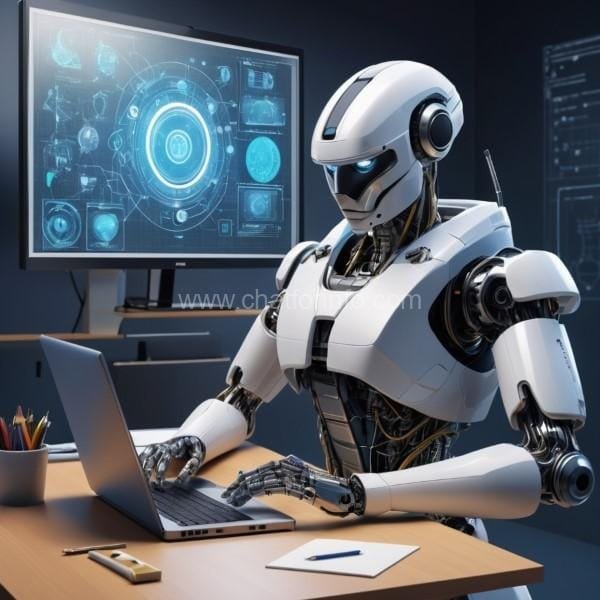One of the most talked-about technologies in today’s world is Artificial Intelligence (AI). It powers many tools we use daily, from virtual assistants like Siri to AI-based recommendation systems like Netflix. But what exactly is AI, and is it a boon or a bane? Let’s explore its definition, applications, benefits, and challenges to answer this question.
What is AI (Artificial Intelligence)?
Artificial Intelligence refers to the ability of machines to simulate human intelligence. This means computers and systems can perform tasks that typically require human intelligence, such as problem-solving, learning, understanding language, and making decisions.
AI is divided into two main types:
- Narrow AI: AI systems designed for specific tasks, like image recognition or language translation.
- General AI: A theoretical form of AI that can perform any intellectual task that a human can do (not yet achieved).
AI Technology and Applications

AI is everywhere today, influencing various aspects of life.
1. AI Films
AI helps in filmmaking by:
- Enhancing special effects.
- Generating realistic animations (e.g., deepfake technology).
- Writing movie scripts (AI programs like ChatGPT).
2. AI Image Creators
AI tools like DALL-E and MidJourney create stunning images based on text descriptions. Artists and designers use these tools for inspiration or to speed up creative processes.
3. AI Video Creators
AI-powered tools like Synthesia and Pictory help create videos without cameras. They can automatically edit clips, generate captions, and even produce 3D animations.
4. AI Content Creators
AI tools like ChatGPT generate blogs, articles, and even poems. Businesses use them to write product descriptions, marketing copy, and more.
5. AI Applications in Real Life
- Healthcare: AI systems like IBM Watson assist in diagnosing diseases.
- Education: AI tutors provide personalized lessons to students.
- Transportation: Autonomous cars like Tesla use AI for navigation.
- Retail: AI chatbots improve customer service.
- Finance: Fraud detection systems analyze transactions in real-time.
6. AI for Students
AI is making learning easier and more accessible by:
- Offering personalized study plans based on individual strengths and weaknesses.
- Solving complex problems with AI-powered apps like Photomath.
- Providing language learning assistance through apps like Duolingo.
Real-Life Examples of AI

Google Maps: Uses AI to predict traffic and suggest the fastest routes.
Netflix Recommendations: AI analyzes your watching habits to recommend shows you’ll love.
Chatbots: Virtual assistants like Alexa or customer support bots answer questions instantly.
Facial Recognition: Used in phones, airports, and security systems.
AI-Powered Robots: Used in factories for assembling products and in hospitals for surgeries.
Is AI Good or Bad?
The Good Side of AI
- Improves Efficiency: AI automates repetitive tasks, saving time and resources.
- Enhances Learning: AI tools make education personalized and accessible.
- Improves Healthcare: AI helps doctors diagnose diseases more accurately.
- Boosts Creativity: AI tools assist artists, writers, and filmmakers.
- Better Decision-Making: AI systems analyze vast amounts of data to provide valuable insights.
The Bad Side of AI
- Job Displacement: Automation might replace some jobs.
- Bias and Errors: AI can inherit biases from data and make mistakes.
- Privacy Concerns: AI systems collect and analyze personal data, raising ethical concerns.
- Dependence on AI: Over-reliance on AI may reduce human critical thinking skills.
- Misuse of AI: Technologies like deepfakes can spread misinformation.
How to Use AI Responsibly?
To ensure AI benefits everyone, we need:
- Ethical Guidelines: Clear rules to prevent misuse of AI.
- Transparency: Making AI systems understandable to users.
- Education: Teaching people how AI works and its potential impact.
- Collaboration: Governments, companies, and researchers must work together to address challenges.
Conclusion
Artificial Intelligence Ai is a powerful tool that can improve lives, solve problems, and open doors to new possibilities. However, it also comes with challenges that need careful handling. Whether AI is good or bad depends on how we use it. By embracing its benefits and addressing its risks, we can ensure AI becomes a force for good in the world.